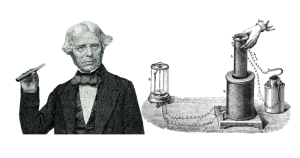A quantity has a value of digital measurement that is limited to two equal-possible values. These values are -1 and 0 or HIGH and LOW or True and False. In reality this is the value range of voltage between 1 and 0. For example, if we determine the circuit-
- From 0V to 0.8V – Logic 0
- From 2V to 5V – Logic 1
Then 0V to 0.8V will give digital value 0. Will give digital values from 2V to 5V1.
The values of the two logics are left blank so that the digital output does not become 1 to 0 or 0 to 1 for a slight change in the value of the voltage. That is, if the voltage of the circuit ever increases from 0.8V to 0.9V, the output will remain 0-e instead of 1. This is necessary because a change in the digital output for a slight change in circuit voltage due to environmental factors is not acceptable.
Then not every value is important for digital quantities. Must be within the two specified limits.
For analog quantities on the other hand each value within the running range is important. For example, when a thermometer is used to measure temperature, its temperature changes as the temperature changes. Every value of the lesson here is important.
Every value is important for analog as well as image. The speaker could be a prime example. Every output is important here for the speaker to understand every word. Otherwise it will not be understandable.
Most external behaviors or variables are analog. Such as temperature, pressure, light intensity, sound, position, speed, flow, etc. Similarly the external world cannot understand digital. Understand analog.
Therefore, any external behavior such as analog signal to a digital device (such as a computer) must first be converted to a digital signal. Then the digital device will be able to understand that signal and store the signal or make a decision based on it. The decision made by the digital device will not be understood by the outside world again. So the output of the digital device has to be re-converted to analog output and given to the external world. Only then will the external world be able to understand that output and make decisions accordingly.
To understand the matter more clearly we can see the example diagram below-
We will now learn the five steps of the diagram in detail.
1. Transducer of external variable to electric current or voltage:
No change in the external world or their signal is not an electrical signal. They are usually continuous or analog changes. So the value of external variable is also an analog signal which is analog. Since our device cannot perceive any signal other than the electrical signal, it is necessary to convert the various parameters of the external change to the equivalent electrical signal i.e. current or voltage at the beginning. For this we will use a transducer. Which is to convert external behavior into equivalent electrical signals. Some known transducers such as-
LDR or light dependent resistor: It also gives different readings for different values of light intensity incident on it.
Thermometer: It gives different and different readings for different temperature values.
IR Sensor: An object on which light is reflected gives different and different readings for positioning at different distances.
The electrical signal we receive through such a transducer is an analog signal. Because it has given continuous lessons for every change of external variable. However, the text of the transducer is proportional to the value of the external variable.
2. Digital to Analog (ADC):
The output signal we received from the transducer is an analog signal. But our device does not understand the analog signal. He can only understand digital signals. Therefore, it is necessary to convert the analog signal received from the transducer into a digital signal. For that we will use an ADC or analog to digital converter. Which will give a digital value equivalent to the analog value. For example, if an LDR gives a voltage of 800mV to 1500mV for a temperature increase of 25 ℃ to 40, then for this value of voltage we get its equivalent binary or digital value from ADC 01010000 to 10010110. However, this digital or binary output will be proportional to the analog input.
3. Digital Device (Computer):
It may seem like it is a computer or a laptop we use. But no, it is basically a storage device that stores digital data. Any decision can be made by analyzing the data as well as storing it. That decision is again a digital data. The computer can also store those decisions and display them in output form over time. Can also display directly stored data.
4. Analog to Digital (DAC):
The decision or stored data that comes from the computer is digital data. We will not understand if we show that. Because we can only understand analog data. Therefore, the data received from the computer needs to be converted to analog. For which we need a DAC device. Which will convert digital data into analog data. For example, digital data transmitted from computer 0000 to 1111 will give output for a total of 16 combinations from 0 to 15mV which is analog.
5. Output device (Actuator)
Output devices or actuators are needed to implement the decisions that come from the computer through the DAC. Which will control the external variables according to the analog decision from the DAC. The actuator controls the external variables by displaying different behaviors for different voltages received from the DAC.
An example
Suppose you want to design a system so that whenever you enter your room, the fan in your room will turn on and off automatically. Again when you leave the room, the fan in your room will turn off.
First you put a PIR sensor facing the door anywhere in your room. Adding an ADC IC to the PIR sensor. Adding a storage or programmable IC or computer to the ADC IC and then adding a DAC IC to it. Now connect your room fan with this DAC IC.
The PIR sensor in the stimulus circuit is a transducer in front of which will output 0V if everything is stationary (no one inside the room is actually present or the door is closed). Again something running in front of it actually (i.e. if someone enters the room) will output 5V. You have the PIR sensor attached to the door straight away so when you do not enter the room it does not have the presence of a moving object in front of it, so it will output 0V. The ADC IC connected to the PIR sensor will generate a binary digit 0000 equivalent to this 0V. Now this binary signal will go to the programmable device or IC. The programmable IC saw that it had input, 0000. Now he decides to keep the fan off. So he will give digital output 0 which will go to DAC IC. DAC IC converts this digital value to analog 0V and sends it to the fan. It will be off when the input voltage of the fan reaches 0V.
Similarly when you enter the room it will get the presence of an object moving in front of it, so it will output 5V. The ADC IC connected to the PIR sensor will produce the equivalent binary digit 1111 of this 5V. Now this binary signal will go to the programmable device or IC. The programmable IC saw that it had input, 1111. Now he decides to keep the fan off. So he will give digital output 1 which will go to DAC IC. DAC IC will convert this digital value to analog 5V and send it to the fan. As the input voltage of the fan reaches 5V, it will continue to rotate.
This is how we can deal with the outside world or the analog world using electrical devices based on the behavior of the outside world.
The two important steps in the above example are ADC and DAC. That is, the transition from analog to digital and from digital to analog.
Written
Jeion Ahmed
Electrical and Electronic Engineering (EEE)
Chittagong University of Engineering and Technology (CUET)




